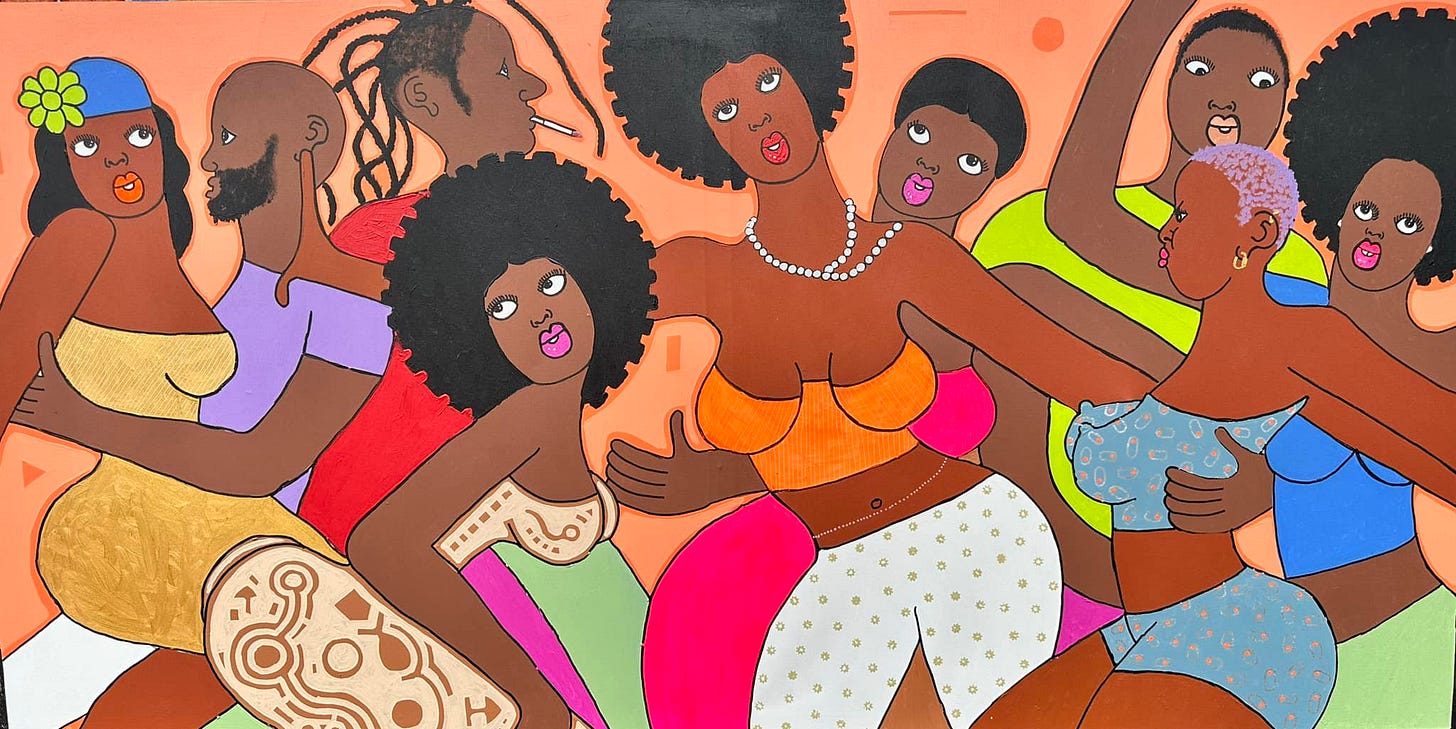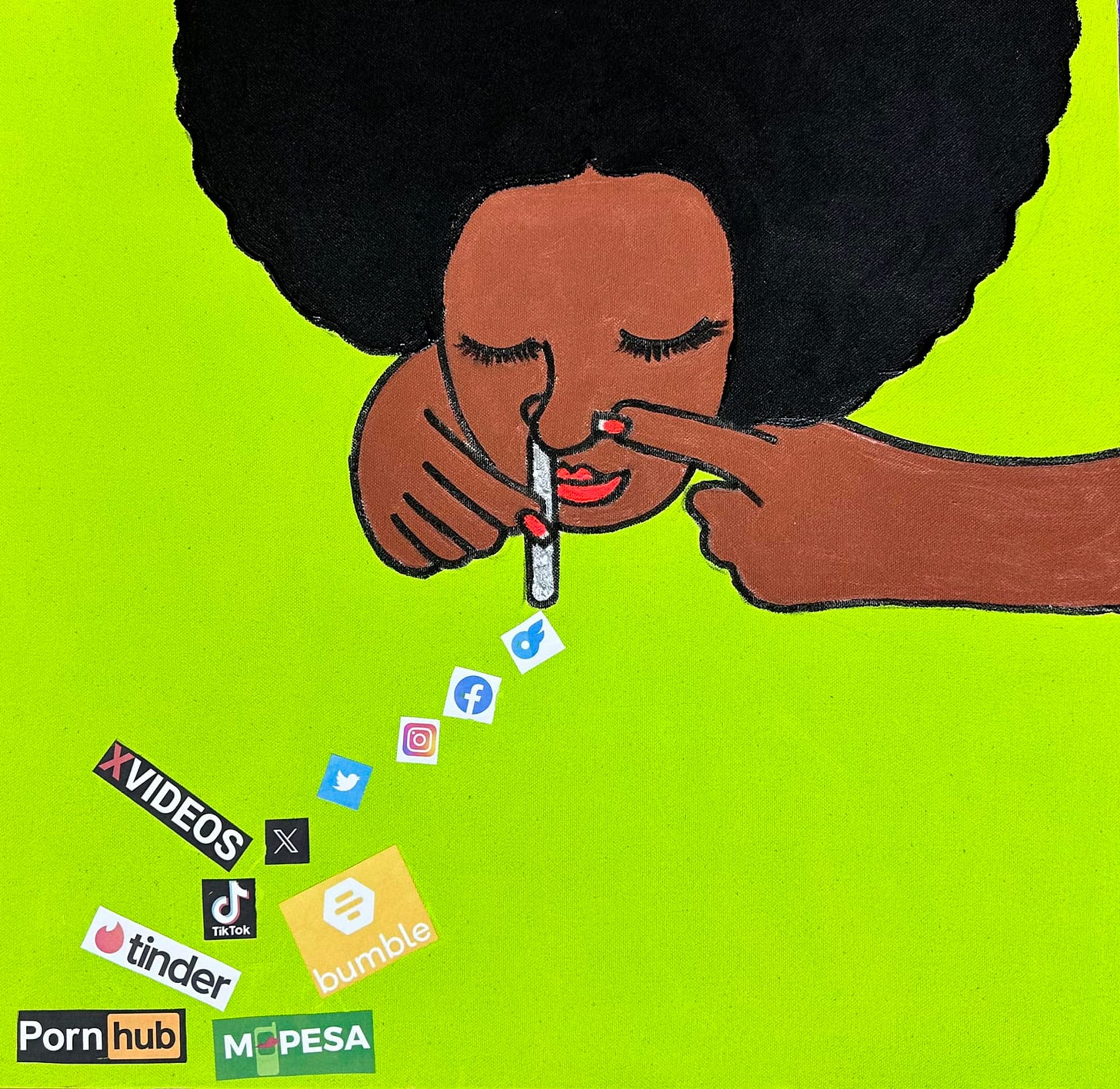Salibonani!
Last week, I took a short trip to Philadelphia, home of Boyz II Men, THE boy band of my youth. Philly is an interesting place. I know the word interesting is often deployed as a sly synonym, e.g. “She has such an interesting face…” But the city is genuinely interesting. It has a lot going for it - good food and plenty happening on the cultural front, but I’m still not quite sure what to make of it overall. I didn’t manage to eat a Philly Cheesesteak Sandwich, but I did join the throng of tourists visiting the Rocky statue in front of the Philadelphia Museum of Art. The trip reminded me that although I have been living in America for a year and a half now, the country remains a fascinating puzzle of a place. I still can’t quite get my head around how different it is from one city to the next.
Onto this week’s business.
I can’t recall how I first came across Michael Soi’s work, but I remember finding it bold, acerbic, funny and unsettling. Michael has been documenting life in Kenya for decades. He uses his paintbrush to take on topics like commercial sex work, political elitism, patriarchy and corruption. In person, Michael is like his work – humorous, thought-provoking and unafraid of wading into the deep end.
Michael currently has a joint exhibition on. If you’re in Nairobi or are Nairobi-adjacent, then go check it out.
Kim: To someone who is yet to be introduced to the universe of Michael Soi, how would you describe your work?
My work is the things I see and the things I hear. I document the life of Nairobians. I document things we love to do and do not talk about openly. Some of these include issues that revolve around commercial sex work. Who the stakeholders are, who the clients are and of course, the men who make this trade thrive.
Why do you think Kenyans avoid talking openly about these topics?
Kenyans prefer to bury their heads in the sand because they are willing participants in some of these vices. A majority are still suffering from the trauma that the British introduced here in the form of religion. Kenya is a predominantly Christian country, but the biggest problem is corruption.
One of the things I have addressed in my work is something I like to refer to as the economics of love, due to the increase of local boys from poor families who view foreign women as a means to an end. The women become a way to escape stringent visa requirements—a means to live in a nice apartment with money in their pockets.
There is this 2016 quote from you: “Art has always been seen as something for decorating homes, and that is why we can get away with so much.” Do you think this is still the case now in 2025?
I guess it’s still the same. Art hasn’t been seen here as something that can be used to voice dissent. To a lot of the people we address in our work, art is merely decorative. So we have been lucky that we can afford to hide in plain sight.
What is preoccupying you now?
I am currently doing woodcut printing. Something I haven’t done in 25 years. It is something I used to love back in the 90s and took a long sabbatical from. I am slowly finding my footing again.
What are some of the obstacles that come with being a working artist in Kenya?
One of the biggest challenges would be a public that isn’t into art or art appreciation through no fault of their own. The government removed art and music from the school curriculum in the 1990s, so we have a whole generation that’s completely disinterested in the arts.
As someone who is yet to afford a Michael Soi painting (I remain hopeful), your work fetches anything from $2000 to that intriguing ‘price on request’ bracket - who are your clients where are they from - local/international?
Trust me, Kim, you can afford any of my pieces. LOL!!! My work is deliberately not expensive because I make my art for consumption by day-to-day ordinary people. I do not make work for wealthy collectors and museums. My work is collected by ordinary people - doctors, teachers, nurses, train drivers…normal kind of people. Most of them are foreigners but we have started seeing a trend where local guys are buying work too.
Has that client base changed over the years? If so, how?
Yes, it has. Most of my clients now come from my Instagram account. Social media has turned out to be such a god send because folks don’t have to be physically present in your space to view your work.
As well as selling paintings, you also have a beautiful line of hand-painted bags, coasters, and puzzles - what made you go in that direction, and how vital is this merchandise to your overall business?
The merchandise generates a small steady stream of money that eventually adds up. Not everyone can afford to buy a painting, so the merchandise is always a safe bet for every kind of pocket.
Looking back from when you started out and now - is there anything you would have done differently?
YES!!!!!! Begin my career earlier.
I have been reading about the economic turbulence facing the global art market - how do you, as an artist and a businessman, protect yourself against these shifting headwinds?
We take whatever curveballs life throws at us. Some years are great, some are not. 30 years in, I have mastered the art of survival.
Do you consider yourself to be a success? What does success look like to you?
I do not look for success. I do my thing. I am just happy that people love what I do. The happiest moments for me are when I get a sell-out crowd at my shows. It’s very humbling.
What brings you pleasure in life?
Getting up in the morning knowing I am headed to the studio.
Is there any African creative whose work you currently admire?
I love Chéri Samba, the Congolese artist. I love his work; it reminds me of my own. He also loves his social scenes.
You can follow Michael here
One other thing…
A huge thank you to everyone who read and commented on Yemisi Aribisala’s Q&A last week. The winners of the Longthroat Memoirs giveaway are Dapo and Abasiama! I’ll be in touch to sort out mailing logistics. There will be more writers and book giveaways to come, so stay tuned!
As always, let me know what other creatives I should feature and tell your friends/frenemies/relatives/neighbours about AU, a free weekly newsletter.
Till next week!














Yayyy! Thank you Kim
😊😊 Thank you Kim.